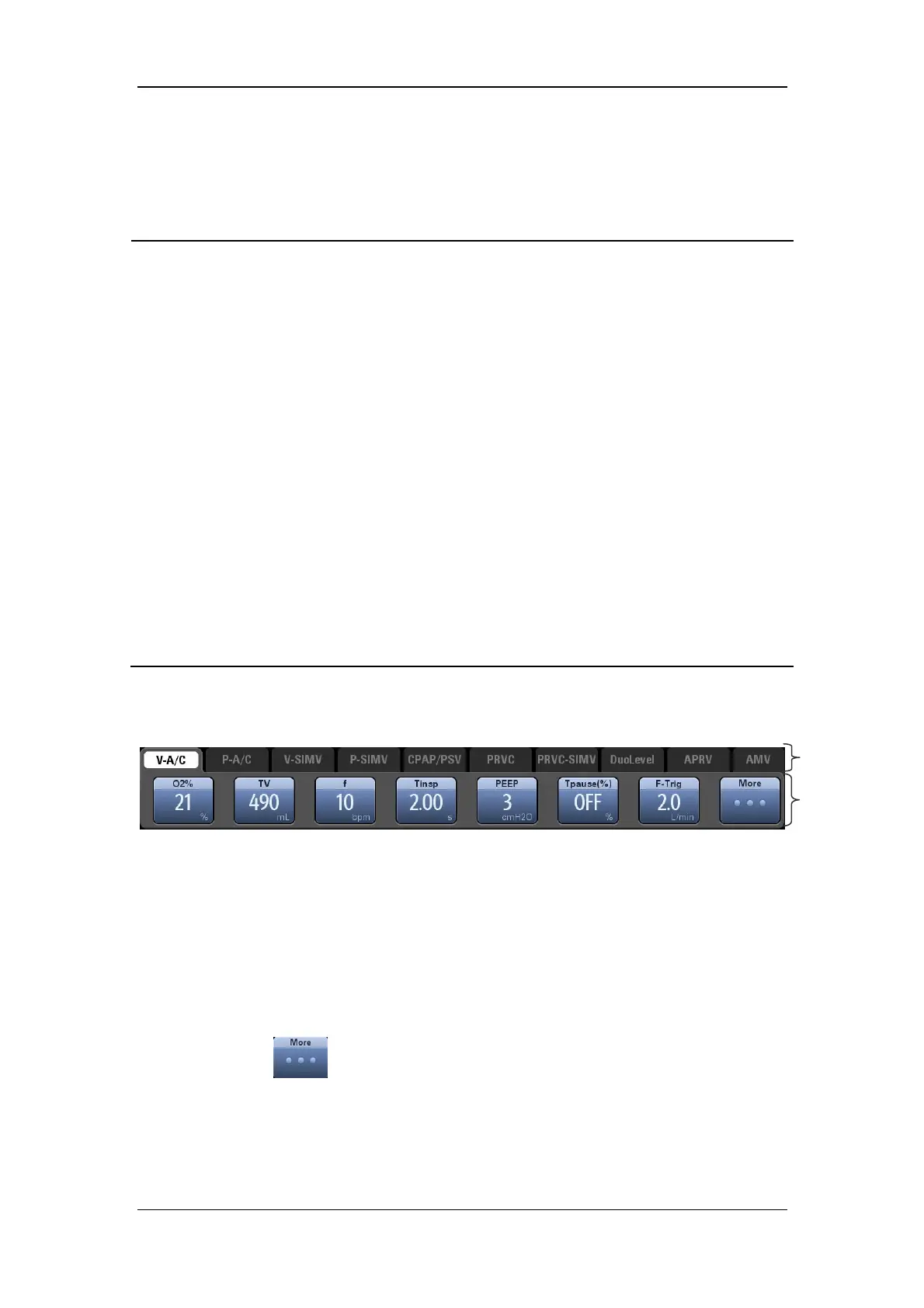6-6
6.5 Ventilation Mode
NOTE
At the inspiratory phase, the ventilator will not automatically generate negative
pressure. However, it may cause negative pressure because patients inhale air.
The user can set high pressure alarm limit. If the pressure reaches the high
pressure alarm limit in the inspiratory phase, the “Paw Too High” high-level alarm
is triggered. The ventilator opens the expiration valve and switches to expiratory
phase until the airway pressure reaches the preset PEEP value. If the airway
pressure exceeds high pressure alarm limit+5 cmH
2
O(adjustable pressure limit),
the ventilator opens the safety valve to release pressure, so that the airway pressure
falls to less than 3 cmH
2
O for continuous 0.5 s. Make sure to set high pressure
alarm limit properly to ensure patient safety.
The P-A/C and P-SIMV are the recommended ventilation modes for use with a
closed-suction catheter during the suction. And the settings are decided by the
operator according to the patient situation.
In the inspiratory phase, waveforms turning red indicates that the patient has
spontaneous inspiration or the pressure support ventilation is triggered in
V-SIMV, P-SIMV, PRVC-SIMV, CPAP/PSV, Duolevel, AMV or APRV mode.
6.5.1 Ventilation Mode and Parameter Setup
1. Ventilation mode setup field
Displays all the keys for setting up ventilation modes. The ventilator can be configured
with the following ventilation modes: V-A/C, P-A/C, V-SIMV, P-SIMV, CPAP/PSV,
PRVC, PRVC-SIMV, DuoLevel, APRV, and AMV. Your machine may have different
ventilation modes.
2. Parameter setup quick key field
Displays ventilation setting parameters corresponding to the active ventilation mode.
Selecting
displays more ventilation setting parameters. The parameters of sigh
function and ATRC function are also set here. Ventilation parameters vary subject to the
ventilation mode.
1
2
